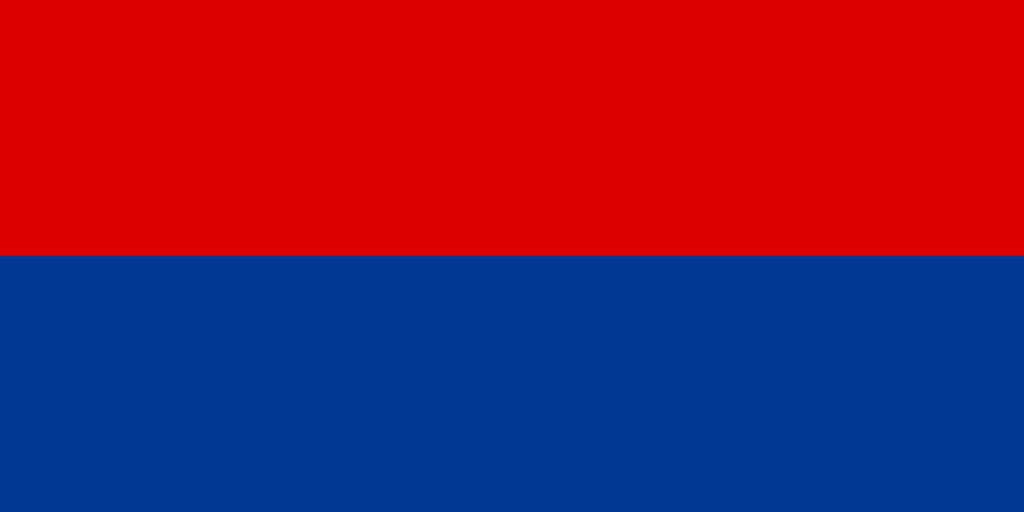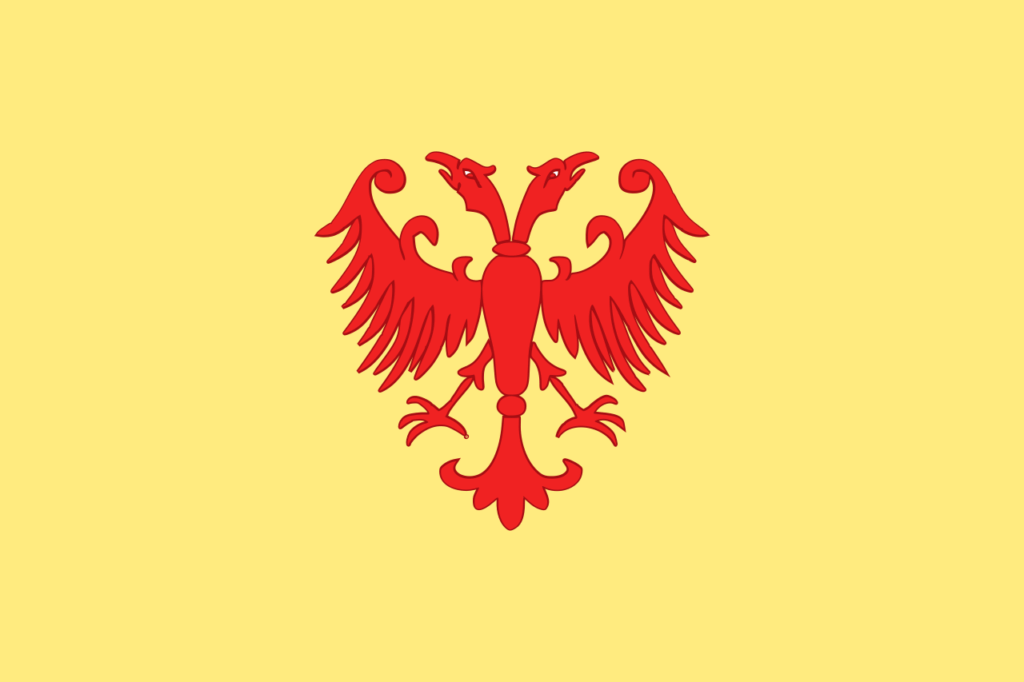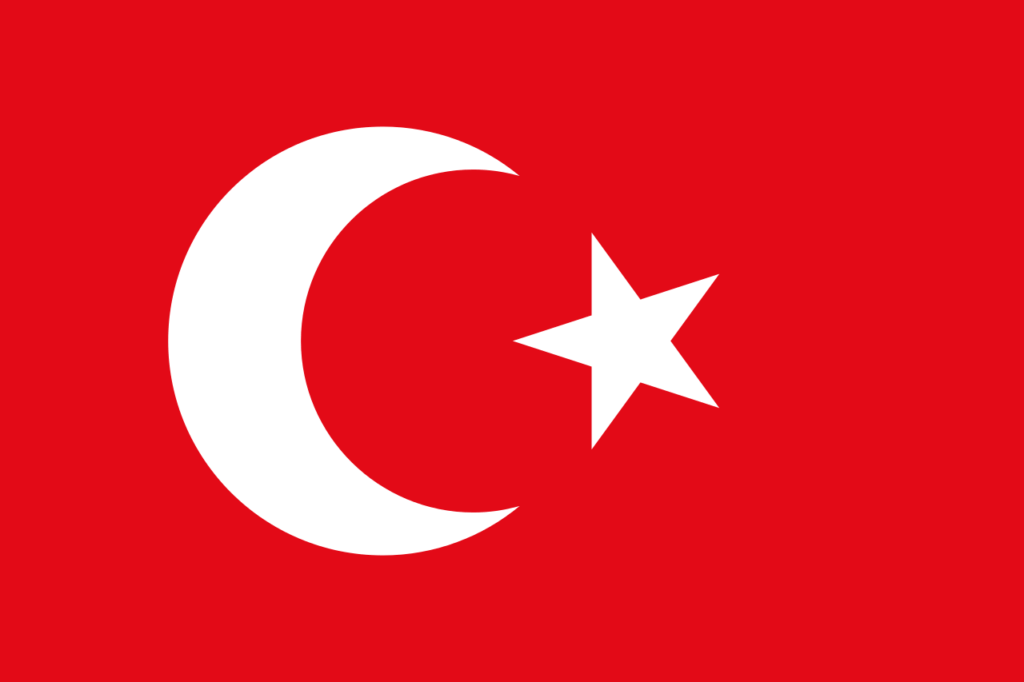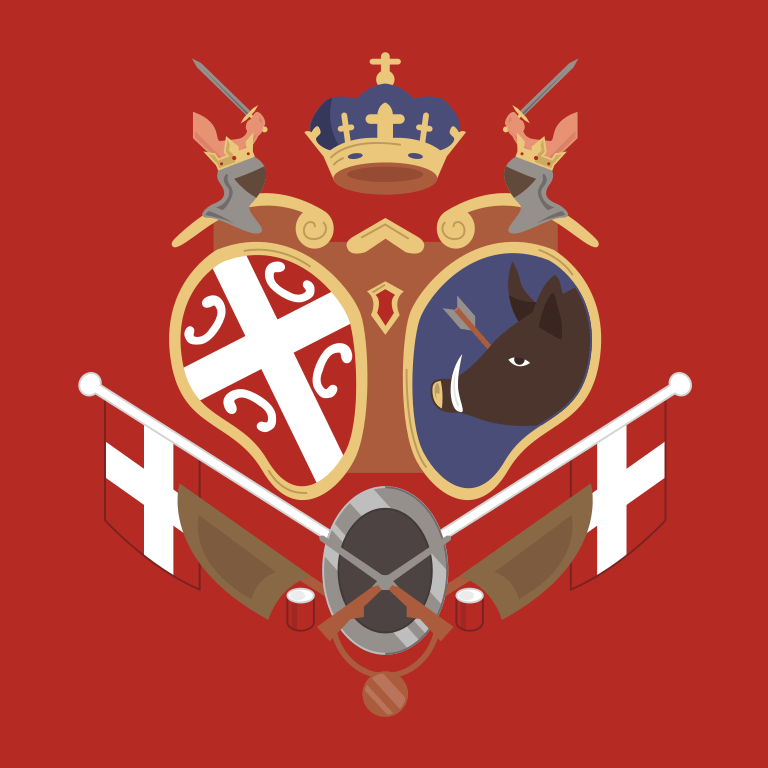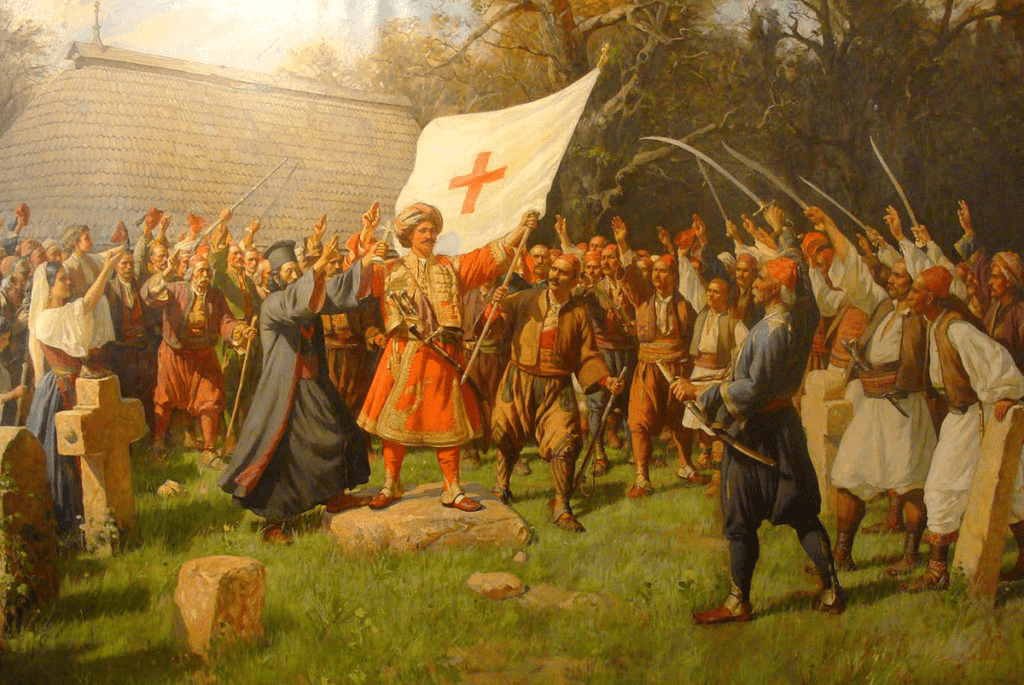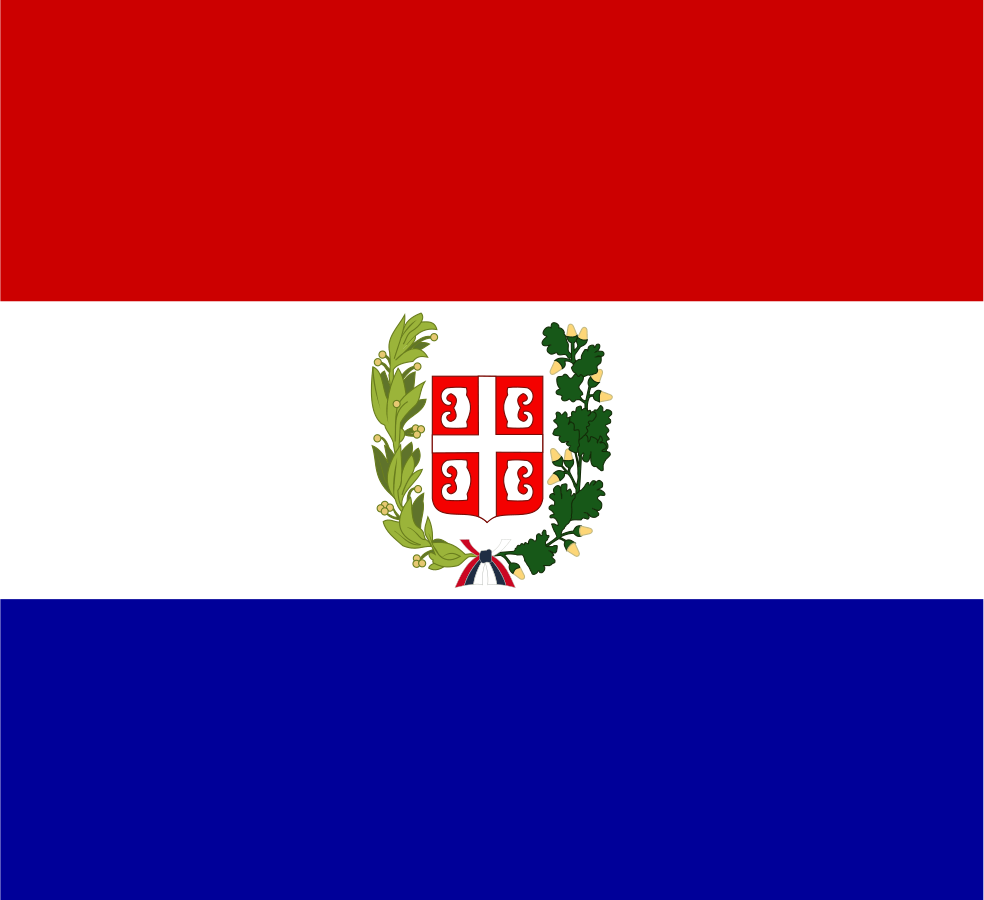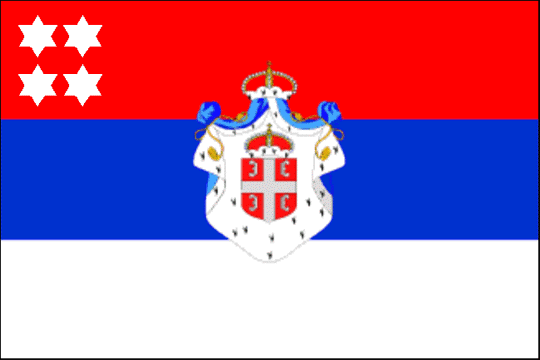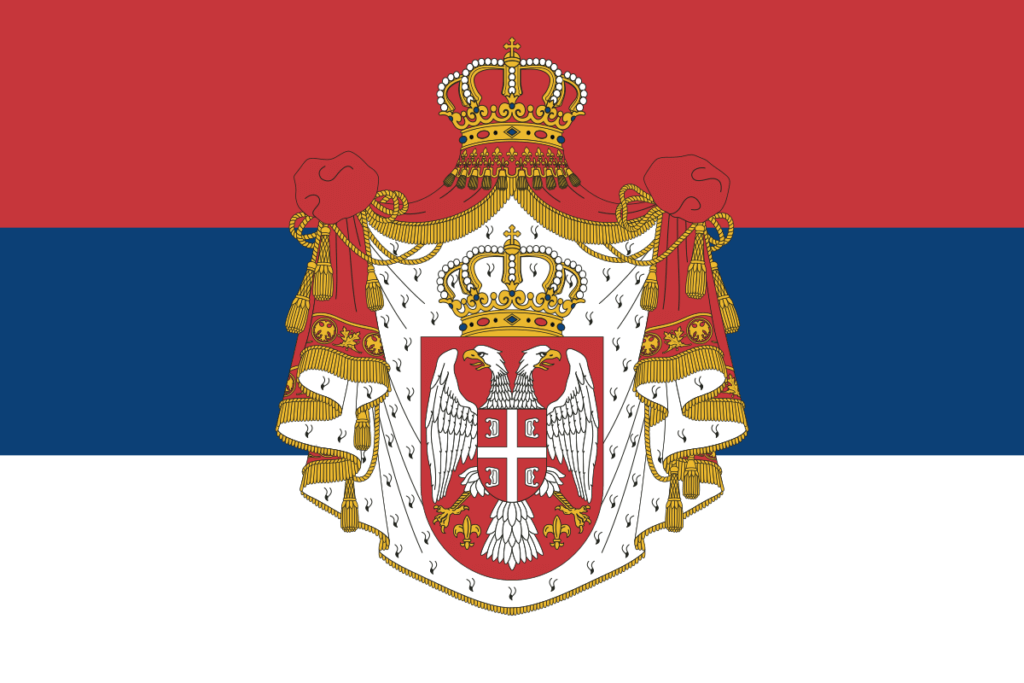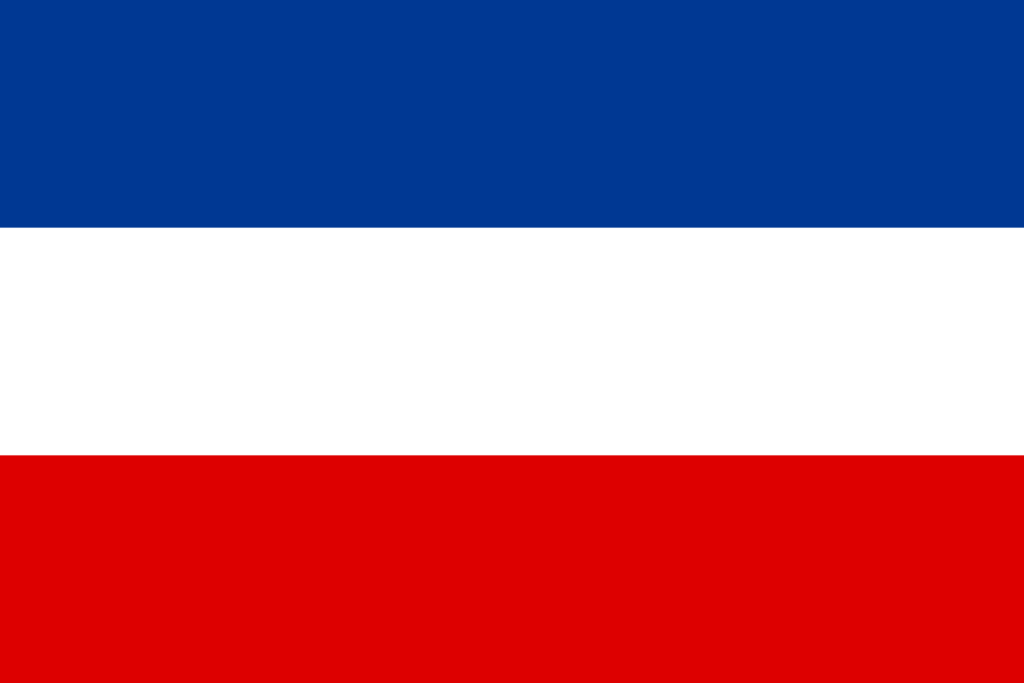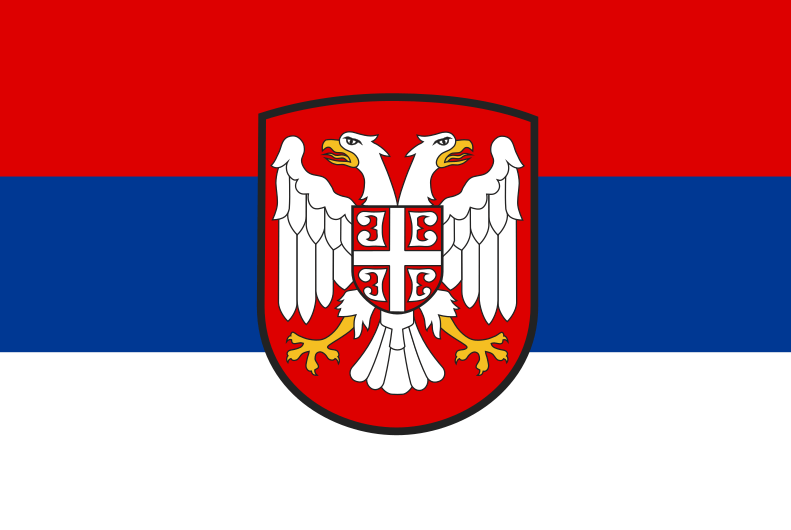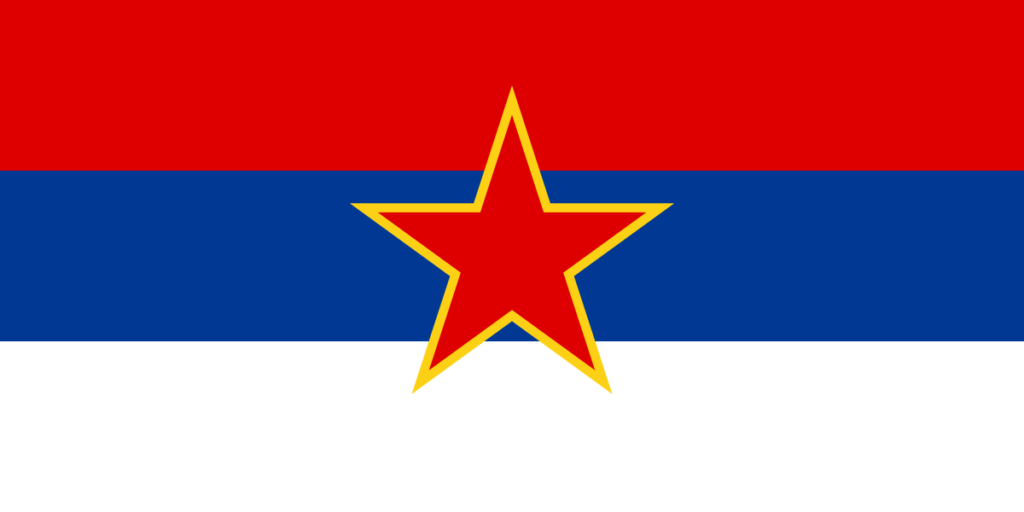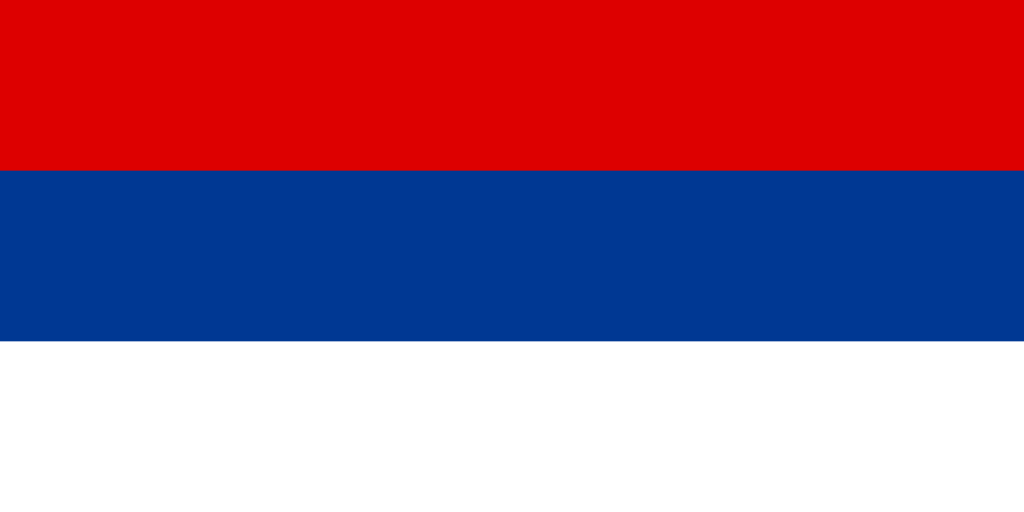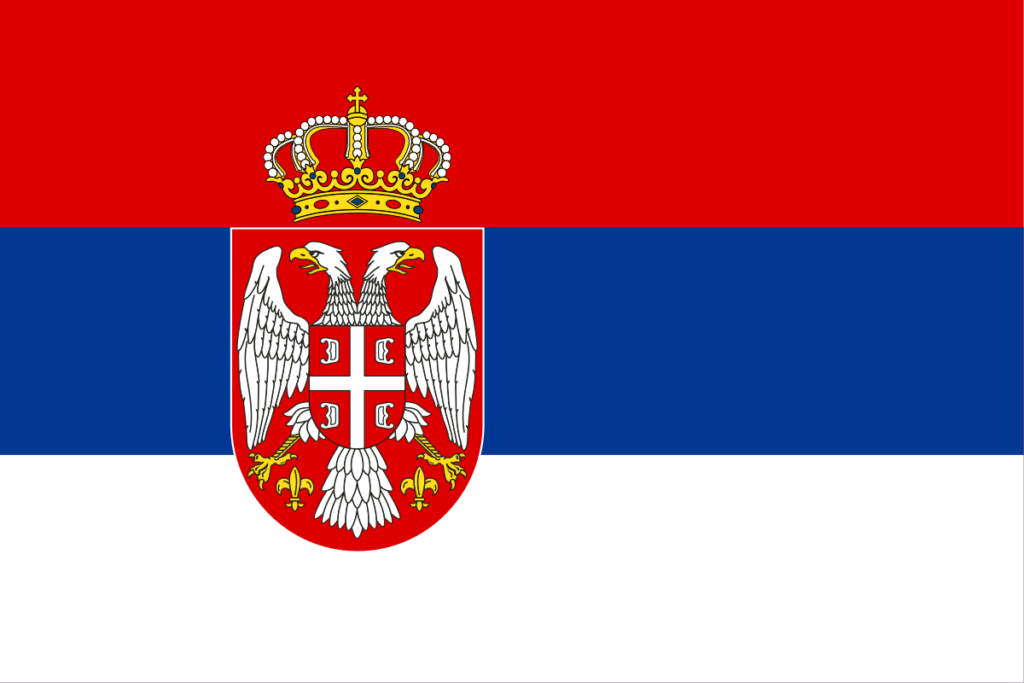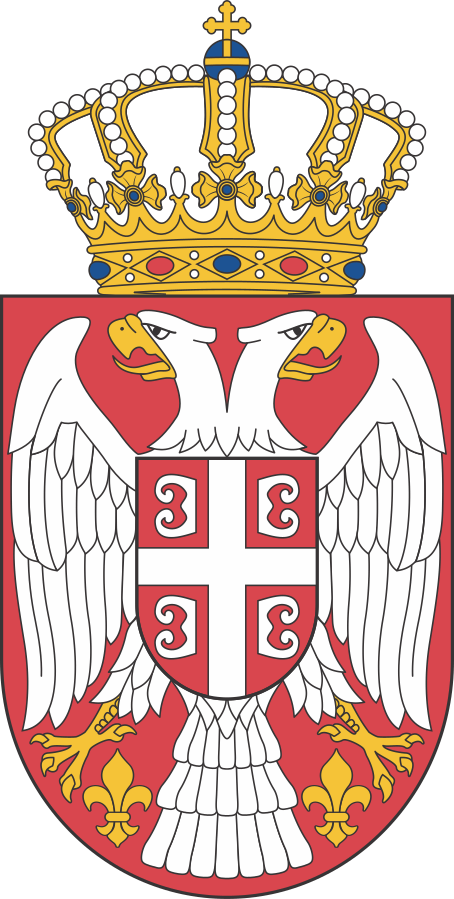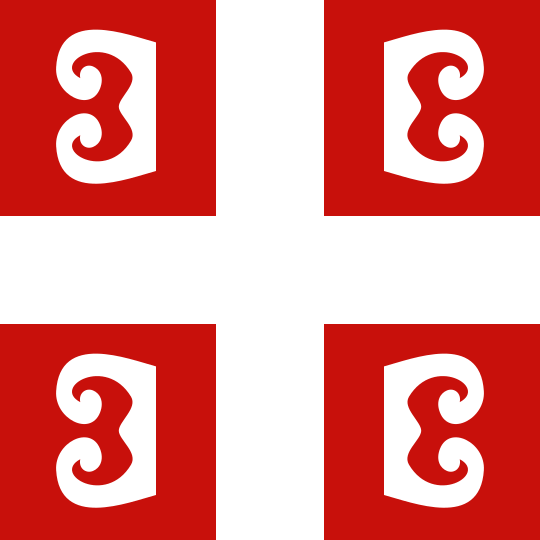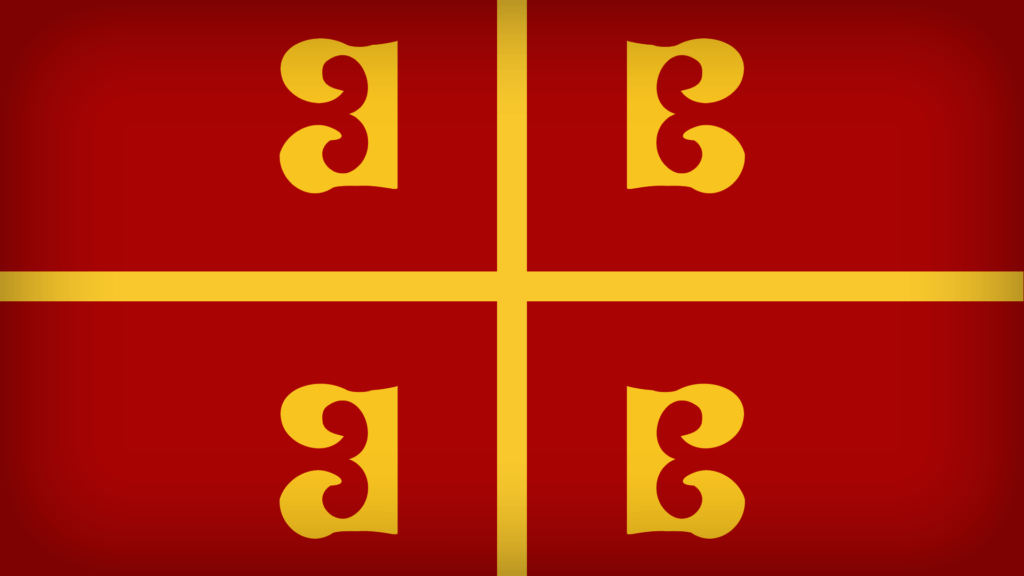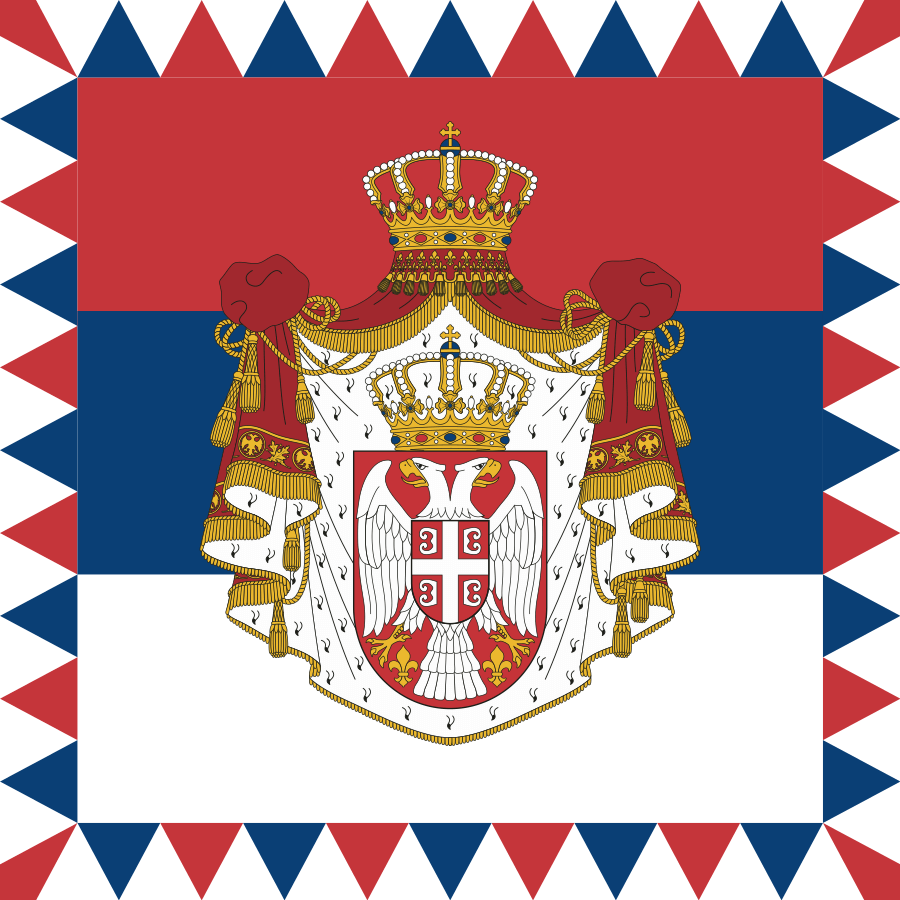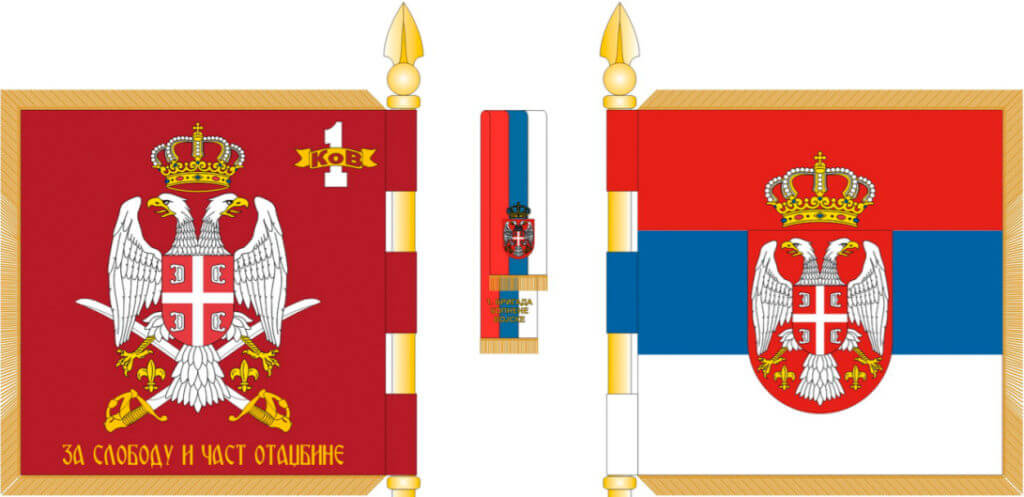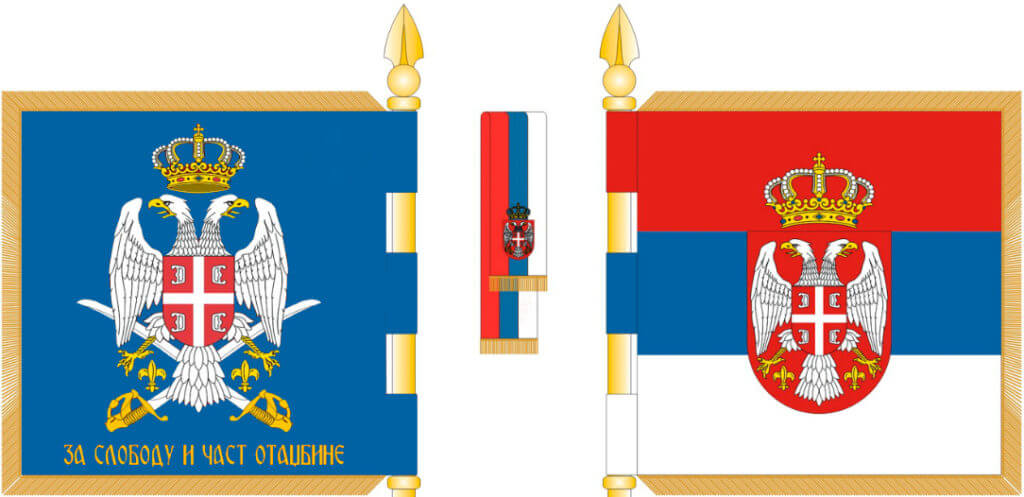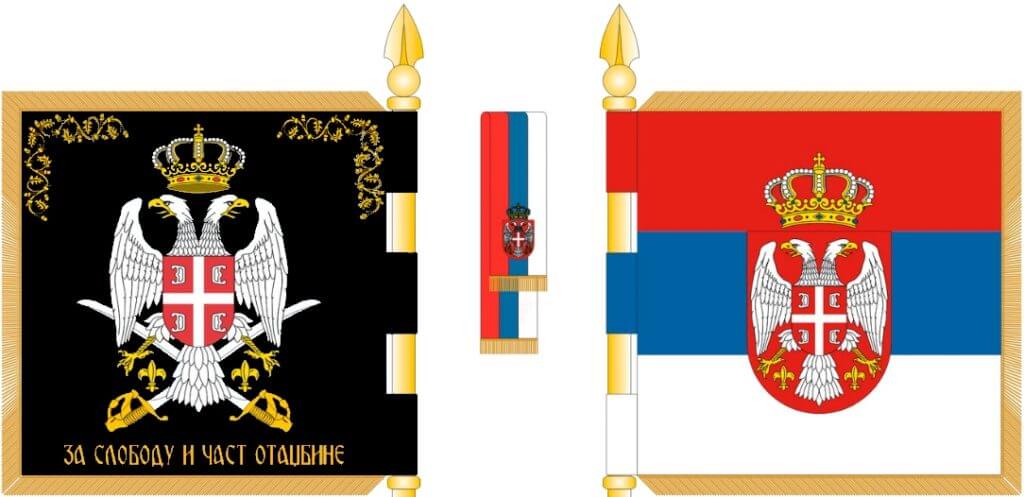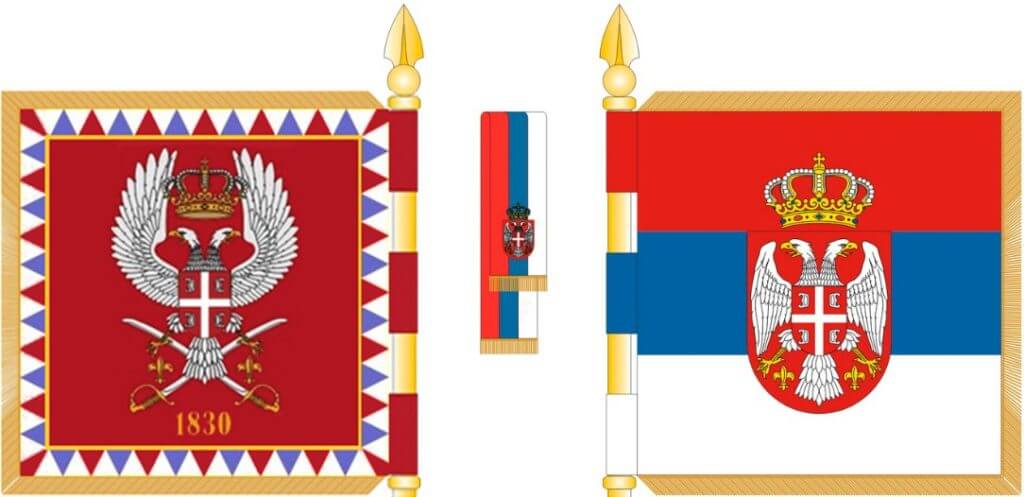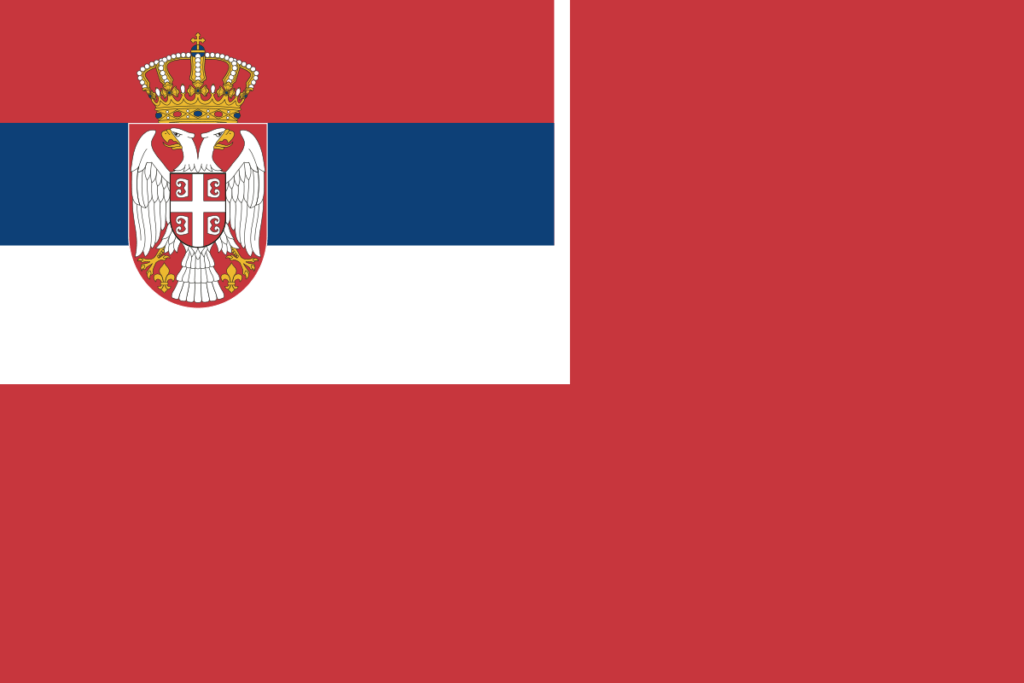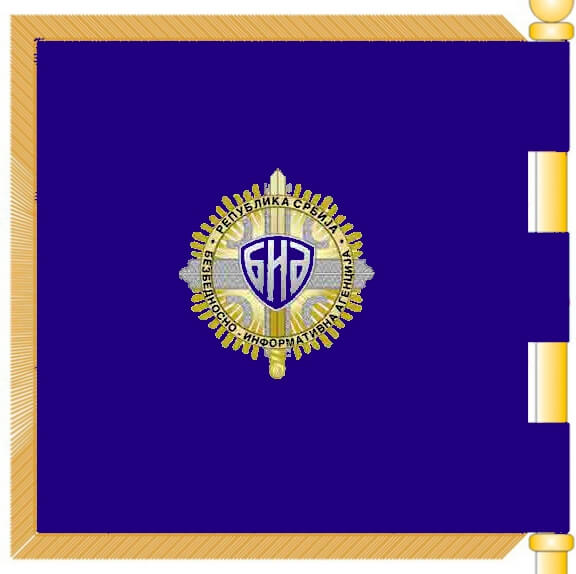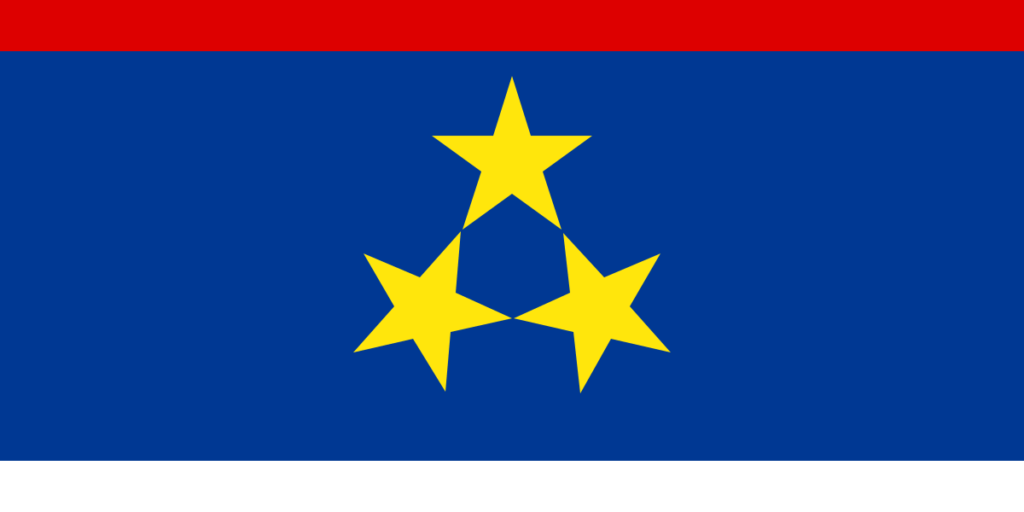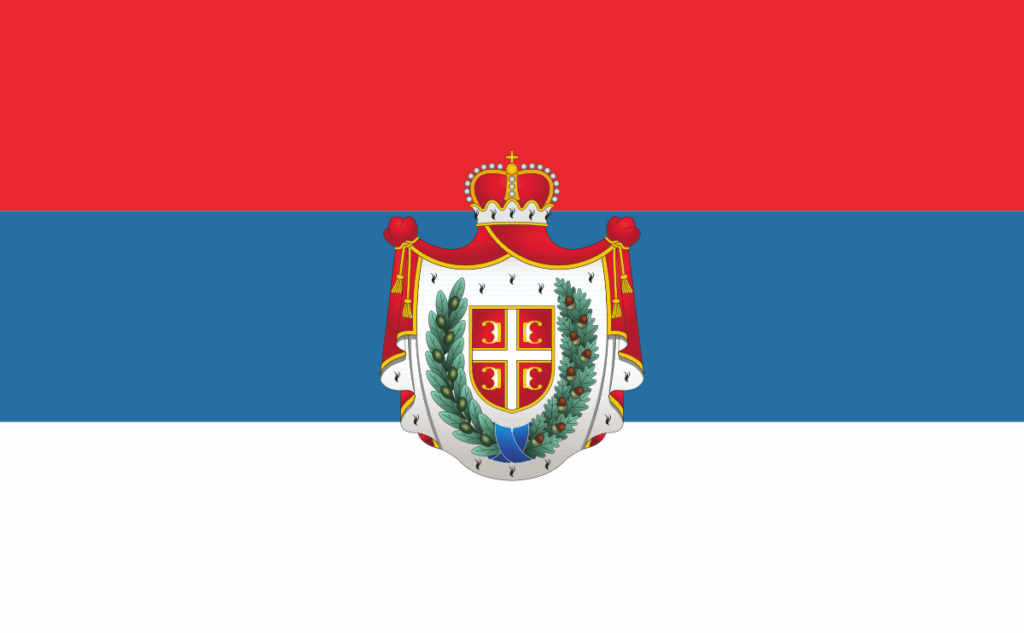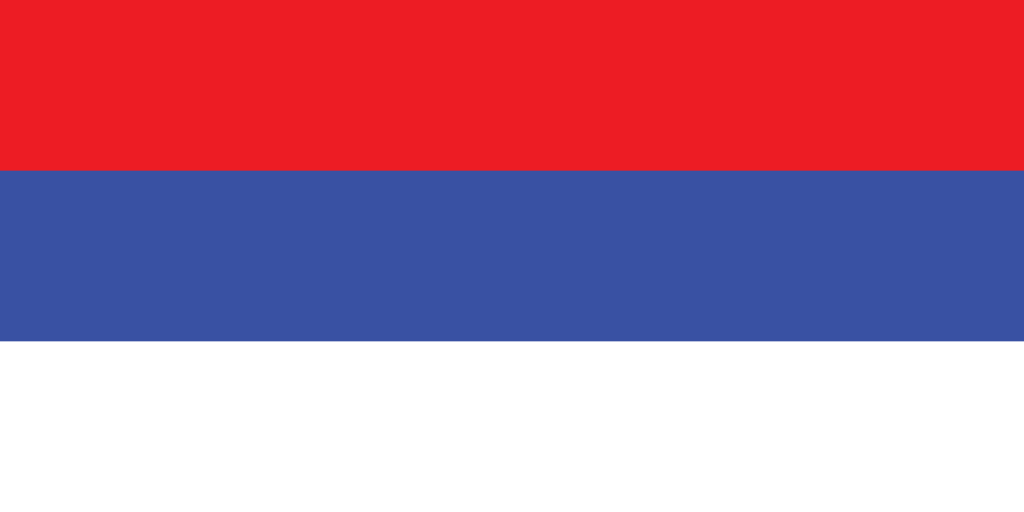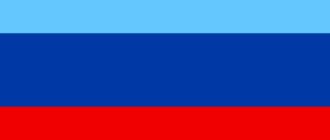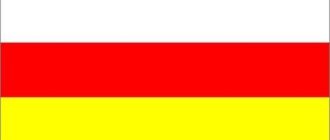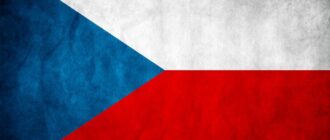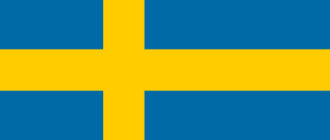Serbia is an extraordinary country that is located at the crossroads of Europe. Serbia is rich not only by the beauty of its own nature, well, by many of their revolutionary, historical, and political events, what they took a personal beginning in it, but at the end of which they retracted them in their whole soil.
So the modern Flag of Serbia looks like this:
History flag of Serbia
The 1st preserved information about the flag occurs for the period of the existence of the Kingdom of Serbia (1217-1346.) under the ruler Stefan Vladislav, first.
By the time of the creation of the Serb Greek kingdom (1346-1371.), the country has already 2nd sign (1339 g.), which partially changed through the existence of the Empire.
At the end of the death of the last monarch, the country fell into the vassal submission of Turkey, and from 1459. Fully overwhelmed by Osmananov.
At first, in the 19th century in Serbia, the buddy at the second occurred: 2nd and 1st. Now, the guerrillas performed under different flags. Among the preserved species, there are a pair of options:
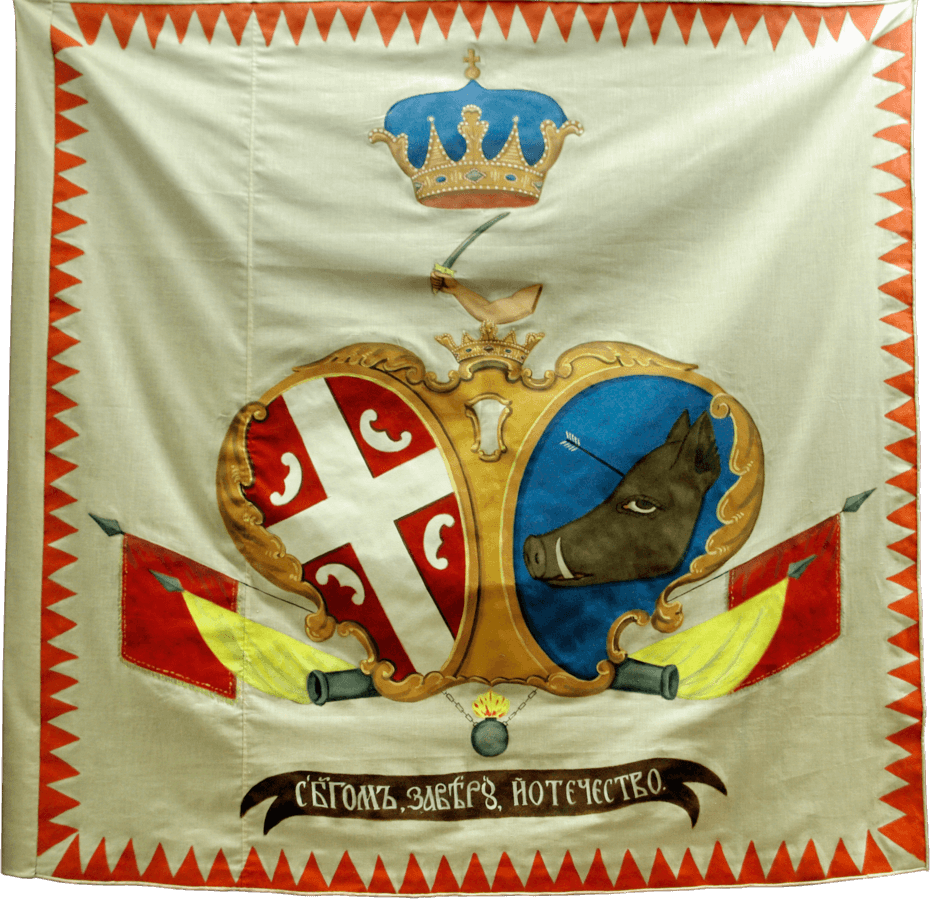
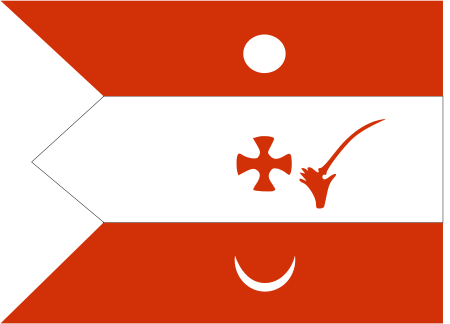
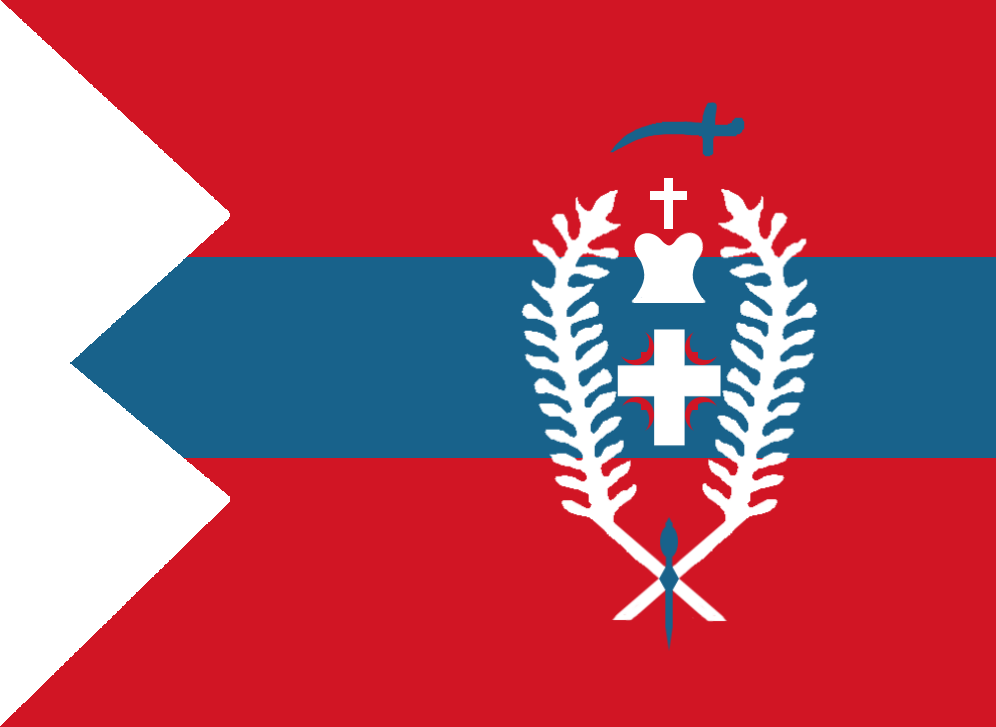
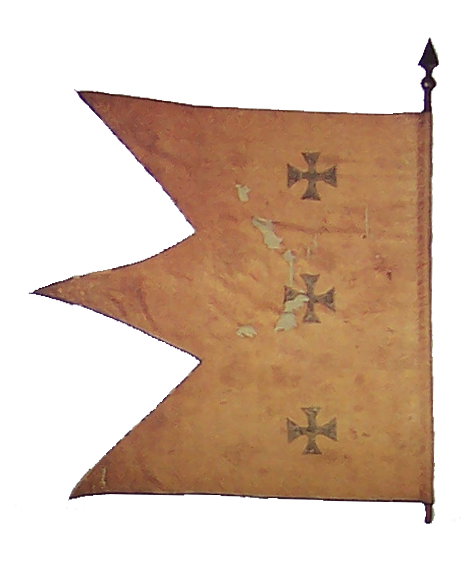
The struggle for independence ultimately gave good results. In the first half of the 30s of the XIX century, Serbia got free status, and after 5 years she adopted its constitution, which was paid to the place to describe the official sign.
At the moment, other flags were used:
- Red-blue-white cloth with a coat of arms in the center and 3 crescents over him;
- similar to the top with 4 six-pointed stars.
At the end of 1878, according to the results of the Russian-Turkish war, Serbia took international recognition and in the near future, the kingdom announced. The state symbol was changed to be the status of the country. In this form, it existed until the end of the First World War.
In December 1918. A new country was created – the Kingdom of Serbs, Croats, and Slovenians, which in 1929. It was renamed the Kingdom of Yugoslavia. In both cases, the official sign of the country was a horizontal tricolor.
During the occupation of Yugoslavia, the government of state salvation was created, which had a personal symbol.
At the end of the 2nd global on this locality, the federal (subsequent socialist) the People’s Republic of Yugoslavia was organized, as part of which was the Socialist Republic of Serbia, which has a symbolism.
The disintegration of Yugoslavia in 1992. He led to the creation of the Alliance of 2 States: And Montenegro of Serbia, what their official sign approved the symbolism version of the 1918-1945 period. Separately for itself, the Republic of Serbia approved the 2nd view of the flag, changing the white and red stripes.
The Union of Serbia and Montenegro did not have a long history and in 2004 he collapsed, and Serbia stated simultaneously on the development of a separate country. For this, her symbolism was changed – the image of the arms was applied to the tricolor.
The modern flag of the country is approved in 2010. It practically repeats the past version, with a partial alteration of the appearance of the coat of arms.
Description
The State Symbol of Serbia is a rectangular cloth, folding from three uniform horizontal stripes:
- Red – top;
- Blue – average;
- White – bottom.
At a distance of 1/7 of the flag length from the side of the Tree written the view of the small coat of arms of Serbia.
The small coat of arms, presented on the sign, consists of 2 white eagles with open beaks and sweeping sides. They are depicted on the shield of the red background, above the heads of which is the crown. Serbian cross, based on the emblem inscribed in the central part of the coat of arms Byzantium Period of 13th century.
The difference is that the symbol of “Ohio” and a cross are in the Serbian version of white, and in Byzantine – Yellow.
Colors flag of Serbia
The official symbol of Serbia has three main colors: red, blue, white. Not counting them used to the same additional tones for the image of a small coat of arms: Yellow, black.
Meaning colors flag of Serbia
Used by the colors of the flag colors are taken to calculate panslavyan tones, without looking at the fact that the same color palette is also available Netherlands. The colors indicated:
- Blue – symbolizes the honesty and chastity of the Serbian people;
- Red – personifies the love and courage of Serbs, which for unity and love for their own country, fought in all battles that fell on her hard share;
- Nobility – and white world sign.
Other flags
Flags and signs for urban structures and various institutions are manufactured in the republic. Among them:
- Governmental
The Standard of the President of the country, (the view of the panels has a huge resemblance to the king of the king Alexander the first);
- Standard of the President of the State Assembly of the Republic,
- Army
Serbian brigade of land armies;
- VVS brigade;
- Military police;
- Guard of Serbia;
- River fleet of the army of the country;
- Information security agency.
- Territorial
The Republic of Serbia has a free province of Vojvodina. Its official sign is there is a red-blue cloth with 3 stars on a blue background.
Salons is permitted for the introduction and the 2nd official symbol of Voiding.
Together with other signs, the Orthodox Church of Serbia has a personal version of the flag.
Interesting facts about the flag
For public implementation, the flag option is allowed without a coat of arms, which is the official sign of the Republic of Serbia as part of Bosnia and Herzegovina.
Non-specialized information about Serbia
| Official language | Serbian |
| Capital | Belgrade |
| Territory | 88 407 km2 |
| Population | 6 963 764 people |
| Currency | Serbian Dinar (RSD, code 941) |
| Telephone code | +381 |

